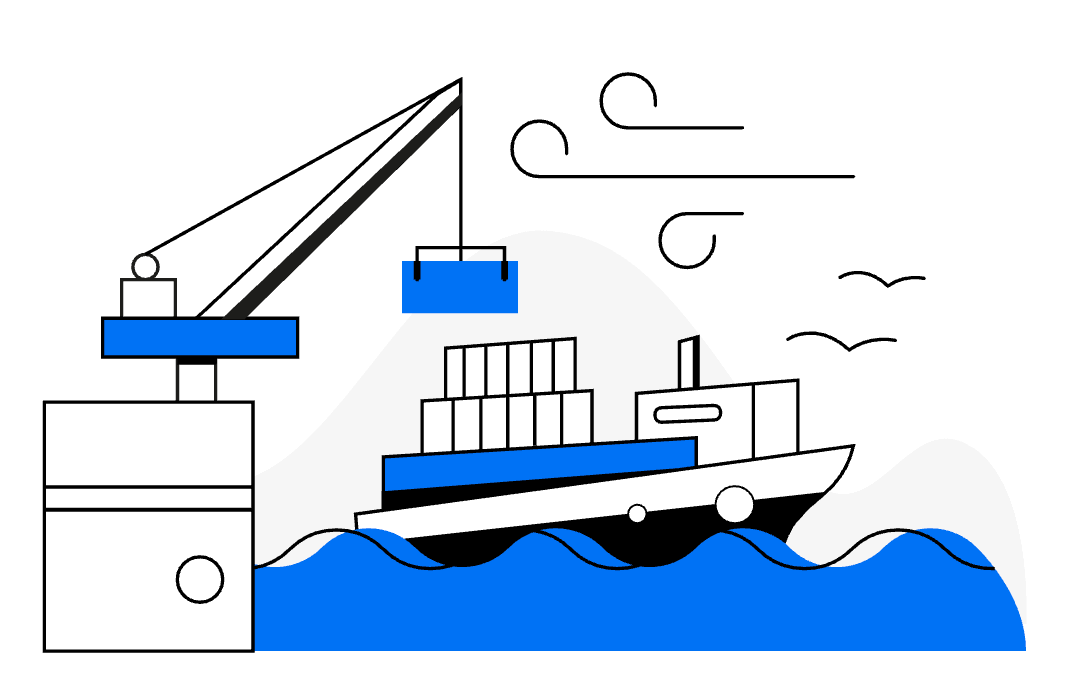The 2020 hurricane season wreaked havoc on port operations. A total of 30 tropical storms and hurricanes formed last year, which is double the long-term average and the most going back to at least 1851. For only the second time in history, the National Hurricane Center had to use the letters of the Greek alphabet to name storms, and it got all the way to Iota before the season ended.
This was not an anomaly; in fact, 2020 was the fifth consecutive year with an above-normal Atlantic hurricane season.
Port operations are particularly vulnerable to climate change and the resulting extreme weather events. Shipping is a key part of the economy, which makes maximizing port uptime a crucial issue. Global freight demand is expected to triple by 2050 and the global shipping containers market is expected to reach 11 billion U.S. dollars by 2025.
Container ships make about 9,000 port calls, and vehicle vessels about 1,000 port calls per week, which means workers at ports worldwide load and unload more than 10,000 liner ship stops per week. Shipping also generates considerably less harmful emissions than air, road, or rail.
Bad weather–– and especially the kind of extreme weather events seen in 2020––can compromise port operations, resulting in an increase in operational shutdowns and subsequent economic losses.
The Impact of Extreme Weather on Ports
In August 2020, port authorities closed the port of Baton Rouge in Louisiana due to tropical storms. That wasn’t an isolated event. The Coast Guard closed almost all Louisiana ports when Hurricane Zeta threatened to make landfall in October 2020.
The Port of Houston was forced to close for six days in August 2017 due to catastrophic rainfall caused by Hurricane Harvey and the Port of Shanghai, the world’s busiest container gateway, was closed for 27 days in 2019. This threw off schedule reliability while a lack of excess terminal capacity made it difficult to speed up cargo operations to make up for lost time.
It is not just major storms that cause delays. Rain, snow, ice, and fog all pose problems in terms of safety and the smooth running of operations. Halting port operations causes delays for weeks or even months and has a knock-on effect on the whole supply chain. Goods end up at the wrong ports or miss their intermodal transportation connections. Customers don’t receive their orders on time, satisfaction levels drop, and revenue dips.
Deciding when to shut down facilities and cancel or delay shipments due to adverse weather conditions is a difficult balance between keeping crew and goods safe and ensuring profitability. This is especially true in the age when extra COVID-19 safety checks and protocols already add more time to the shipping process.
Port authorities struggle with how to best prepare (in the short- and long-term), given the uncertainty of timing and scale associated with climate change.
Connecting the Dots for Port Authorities
While port authorities already take precautions when there is bad weather on the horizon, you often have to make assumptions based on a changing weather forecast. But as weather is unpredictable, the fewer assumptions you make, the better.
Ports need the right information to understand what is coming and on what scale. The more data they have access to, and the more they put that into context in terms of how they operate and previous trends, the better.
The Port of New Orleans is leading the way when it comes to collecting and using data. The port is trialing using data-collecting sensors that can help make better business and operational decisions.
One of the phases of this project will see the port build a Hurricane and Flood Risk Center, which will collect and model environmental data to predict and prepare for flooding. It will also unify supply chains of container depots, road transporters, dock terminals, shipping lines, warehouses, and cargo operators on one digital platform to help make more informed decisions that could reduce shipping times and improve safety.
The port of Rotterdam, Europe’s largest port by cargo tonnage, is also undergoing a digital transformation to better predict water and weather conditions. It is using sensors, augmented intelligence, and smart weather data to predict the best time to enter the port of Rotterdam by identifying the most favorable conditions. Port operators will have information on air temperature, wind speed, humidity, turbidity, and salinity of the water, along with water flow and levels, tides, and currents.
Port operators in Rotterdam can also use what they are calling “Digital Dolphins”–– smart quay walls and sensor-equipped buoys––that provide water and weather conditions and allow port operators to identify the best time for ships to dock, and where and when they can do so.
Making Intelligent Weather Decisions
Merely generating and accessing this data is not enough to anticipate conditions that affect operations, prevent unplanned outages, protect your people and assets, and help ports stay open longer and get back to work faster.
Many of the weather forecasts that ports have access to only provide general data for the area and do not include short-term severe weather events. They also don’t provide the insight you need to understand which decision to make and how it will affect your business.
Weather intelligence software is much more than the kind of forecast you see on TV news, It gives you access to up-to-the-minute, hyper-localized forecasts—it’s the forecast put in context for your business. This software allows you to integrate forecasts into the decision-making and provides actionable insights into the weather today, tomorrow, and in the coming weeks.
In terms of specific and tangible benefits for port operators, weather intelligence software can:
- Reduce port closure time with up-to-the-minute forecasts
- Get granular local forecasts to help you make accurate business decisions that balance crew safety with profitability
- Improve ROI and SLAs with efficient port operations, cargo management, and fuel usage
- Coordinate arrivals and departures during safe weather conditions to avoid damages to vessels
- Minimize damage by moving and storing equipment safely
- Keep employees safe by closing down operations or adjusting shift times and scheduling crew and shift work during ideal weather conditions to avoid waste
- Communicate with customers, employees, and suppliers to keep them up-to-date on any changes that will affect them
Weather intelligence software provides you with the right tools to forget about the forecast and focus on improving specific operational use cases.





